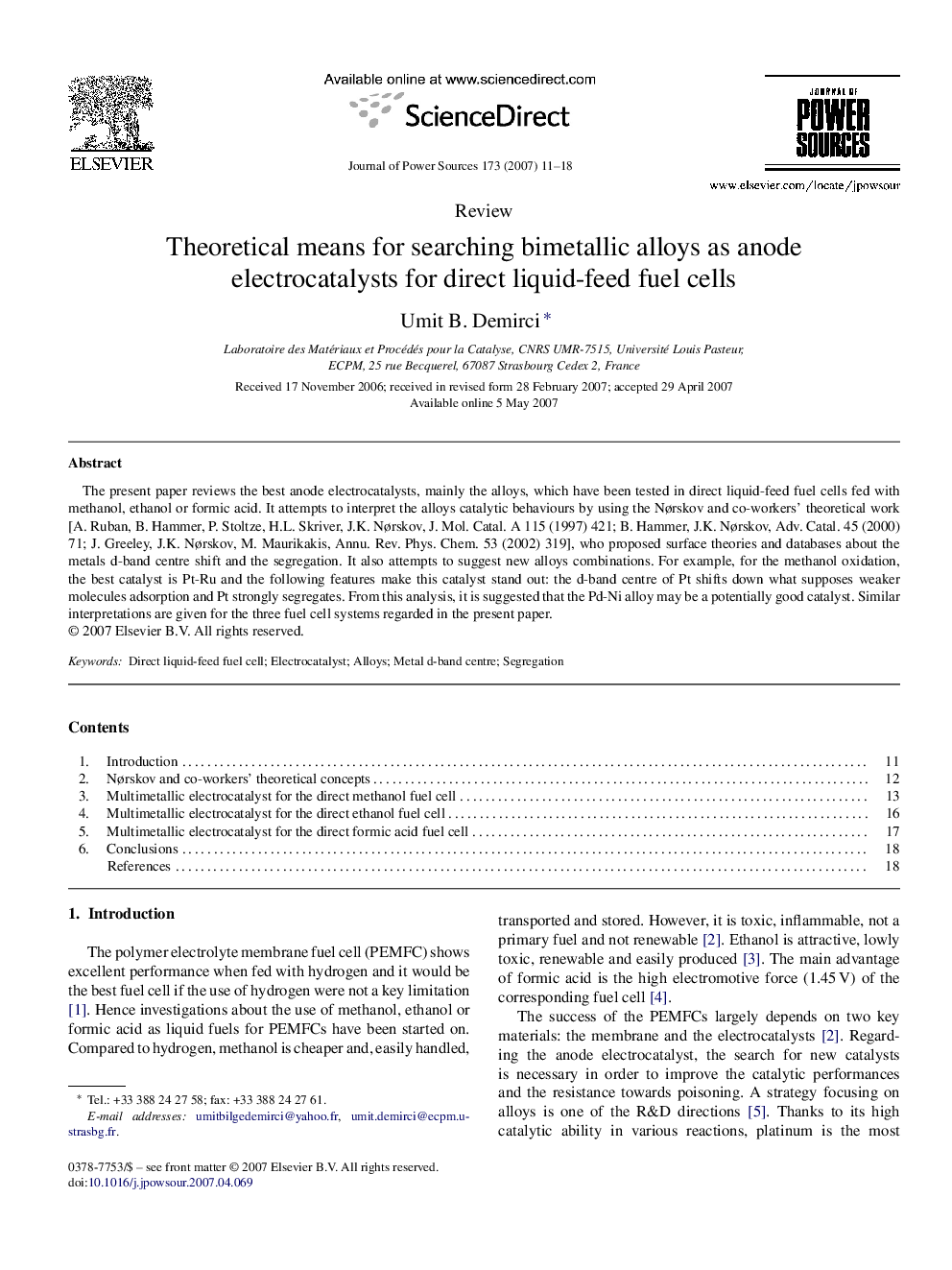| Article ID | Journal | Published Year | Pages | File Type |
|---|---|---|---|---|
| 1294863 | Journal of Power Sources | 2007 | 8 Pages |
The present paper reviews the best anode electrocatalysts, mainly the alloys, which have been tested in direct liquid-feed fuel cells fed with methanol, ethanol or formic acid. It attempts to interpret the alloys catalytic behaviours by using the Nørskov and co-workers’ theoretical work [A. Ruban, B. Hammer, P. Stoltze, H.L. Skriver, J.K. Nørskov, J. Mol. Catal. A 115 (1997) 421; B. Hammer, J.K. Nørskov, Adv. Catal. 45 (2000) 71; J. Greeley, J.K. Nørskov, M. Maurikakis, Annu. Rev. Phys. Chem. 53 (2002) 319], who proposed surface theories and databases about the metals d-band centre shift and the segregation. It also attempts to suggest new alloys combinations. For example, for the methanol oxidation, the best catalyst is Pt-Ru and the following features make this catalyst stand out: the d-band centre of Pt shifts down what supposes weaker molecules adsorption and Pt strongly segregates. From this analysis, it is suggested that the Pd-Ni alloy may be a potentially good catalyst. Similar interpretations are given for the three fuel cell systems regarded in the present paper.
